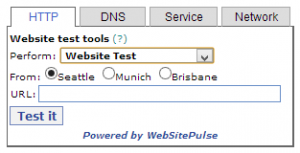Page 51
What Is Application Monitoring and How Is It Performed?
Posted on May 21st, 2013 by Boyana Peeva in Monitoring, Tech Application monitoring
Application monitoring
Application monitoring watches out the availability and performance of multi-step web transactions and web applications to ensure they deliver excellent performance from the end-user perspective. Typical web transactions could be customer logins, purchase order fulfillment, submitting different web forms, and other user interactions with a website and web application.
Monitoring your website for any flaws, errors, or suspicious hacking alerts should be performed frequently. Waiting until you are at the end of a section or insert wastes your time and your website's functions. Therefore you should keep a proactive stance regarding monitoring. You should be the first to realize a problem is looming, and you should be able to fix it before it is common knowledge.
What Is a Client Side Certificate?
Posted on April 25th, 2013 by Boyana Peeva in WebSitePulse News A client side certificate is a certificate you use to establish your server to the client. This is the best way for the server to "know" exactly who is connecting to it. It works a lot like having a username and a password on your server but without having to interact with the user. This certificate is used when the client must be known without having to enter a username and password.
A client side certificate is a certificate you use to establish your server to the client. This is the best way for the server to "know" exactly who is connecting to it. It works a lot like having a username and a password on your server but without having to interact with the user. This certificate is used when the client must be known without having to enter a username and password.
These certificates are quite useful as far as the security of your network. They are created on the Internet server on your computer and can be requested by the client’s computer. That way, the security of your network is a lot stronger. The client will know that all the information they have sent to your computer is secured with a digital signature provided by the host domain server.
What Is a Ping Test?
Posted on April 18th, 2013 by Boyana Peeva in WebSitePulse NewsPing is a networking utility program or a tool to test if a particular host is reachable. It is a diagnostic that checks if your computer is connected to a server. Ping, a term taken from the echo location of a submarine, sends data packet to a server and if it receives a data packet back, then you have a connection. The term "ping" can refer to the time it takes for a data packet to travel round-trip. It means "get the attention of" or "check the presence of". In a computer network, a ping test is a way of sending messages from a computer to another. Aside from checking if the computer is connected to a network, ping also gives indicators of the reliability and general speed of the connection.
What Is Website Testing?
Posted on April 15th, 2013 by Boyana Peeva in Tech Website testing is an important part of your website's ongoing development. Whether you're just going into production or carrying out regular maintenance on your site, it's essential you follow a check list and make sure you're testing thoroughly to ensure your site is user-friendly, accessible and bug-free. But fear not - if you're not sure where to start, we can help.
Website testing is an important part of your website's ongoing development. Whether you're just going into production or carrying out regular maintenance on your site, it's essential you follow a check list and make sure you're testing thoroughly to ensure your site is user-friendly, accessible and bug-free. But fear not - if you're not sure where to start, we can help.
Testing at Every Stage
Testing should be carried out at every stage of your website's development. Many have failed to do this by making the mistake of only testing when a site is near completion, and only highlighting huge errors when most of the work has been done. In order to avoid this and minimize any loss of productivity, you should perform vital tests to locate and eradicate any errors or bugs in the early stages of development, right up until product completion.
How to Manage the Security of Your Data
Posted on April 8th, 2013 by Krista Hague in Organisations underestimate the value of their data security, yet the cost implications of doing so can be catastrophic. Whilst daily systems and processes may be sound from a workflow viewpoint, how secure are they? This article outlines the three key areas for consideration and specifies what you should demand from your software solution.
Organisations underestimate the value of their data security, yet the cost implications of doing so can be catastrophic. Whilst daily systems and processes may be sound from a workflow viewpoint, how secure are they? This article outlines the three key areas for consideration and specifies what you should demand from your software solution.
Safeguarding your data is vital in ensuring efficient continuity of operations.
There are many reasons why business operations fall over not least due to the sheer volume of systems and processes in operation.

 Copyright 2000-2026, WebSitePulse. All rights reserved.
Copyright 2000-2026, WebSitePulse. All rights reserved.